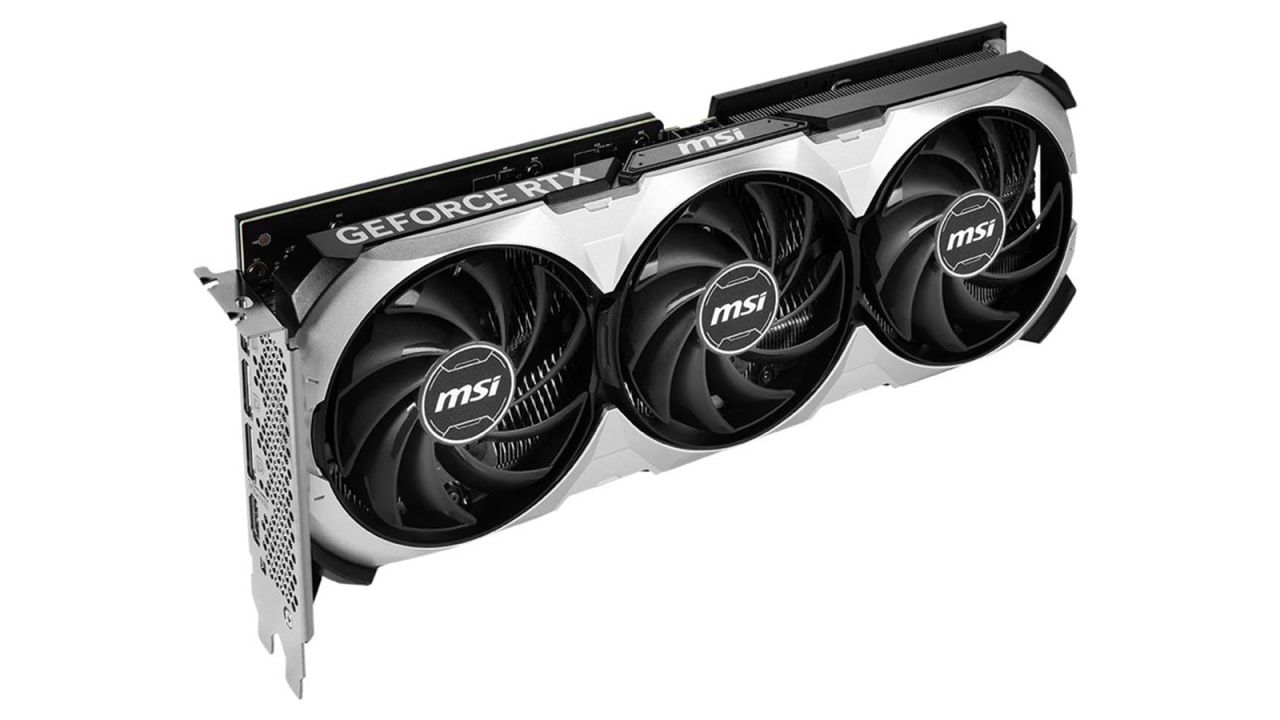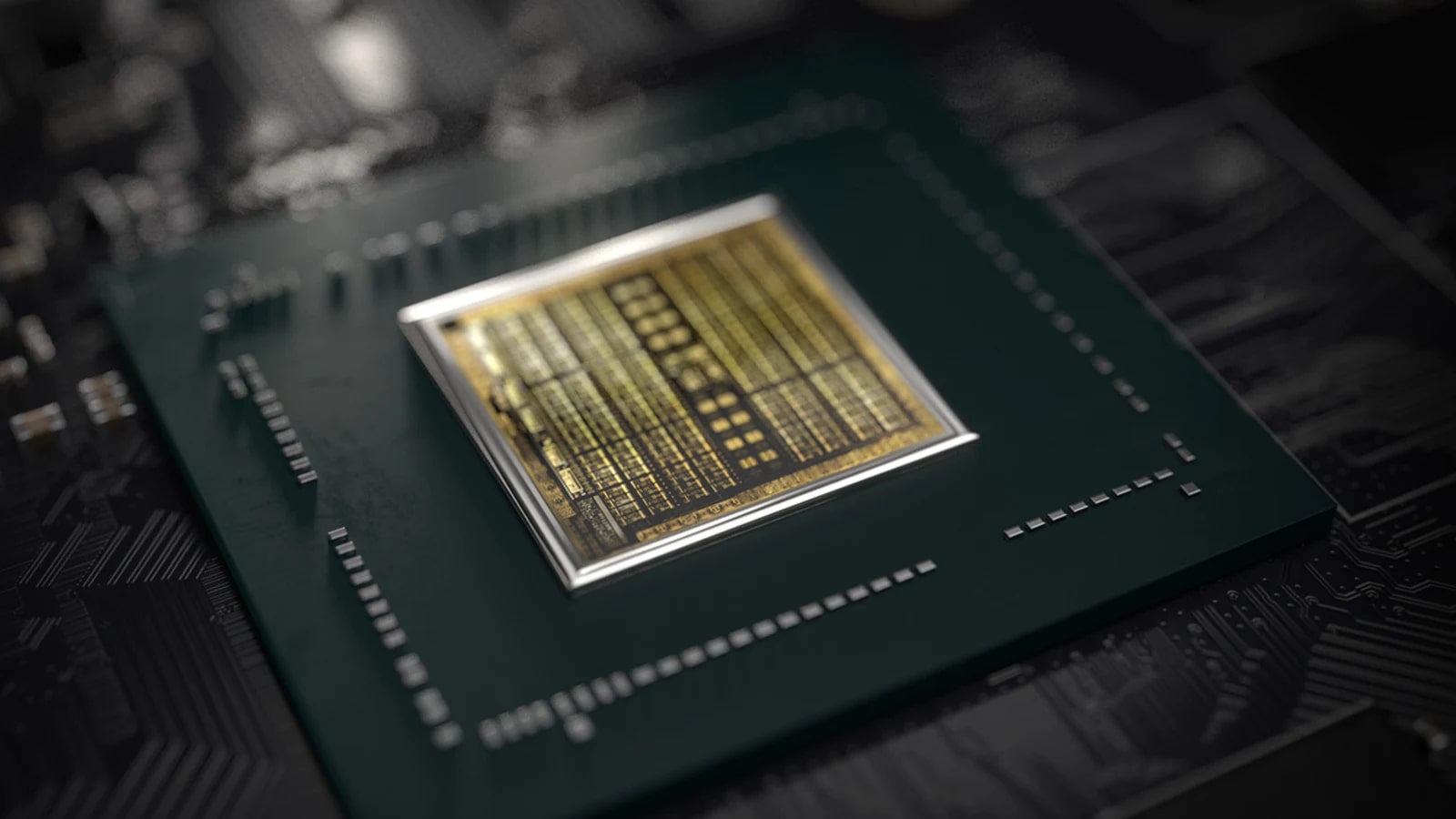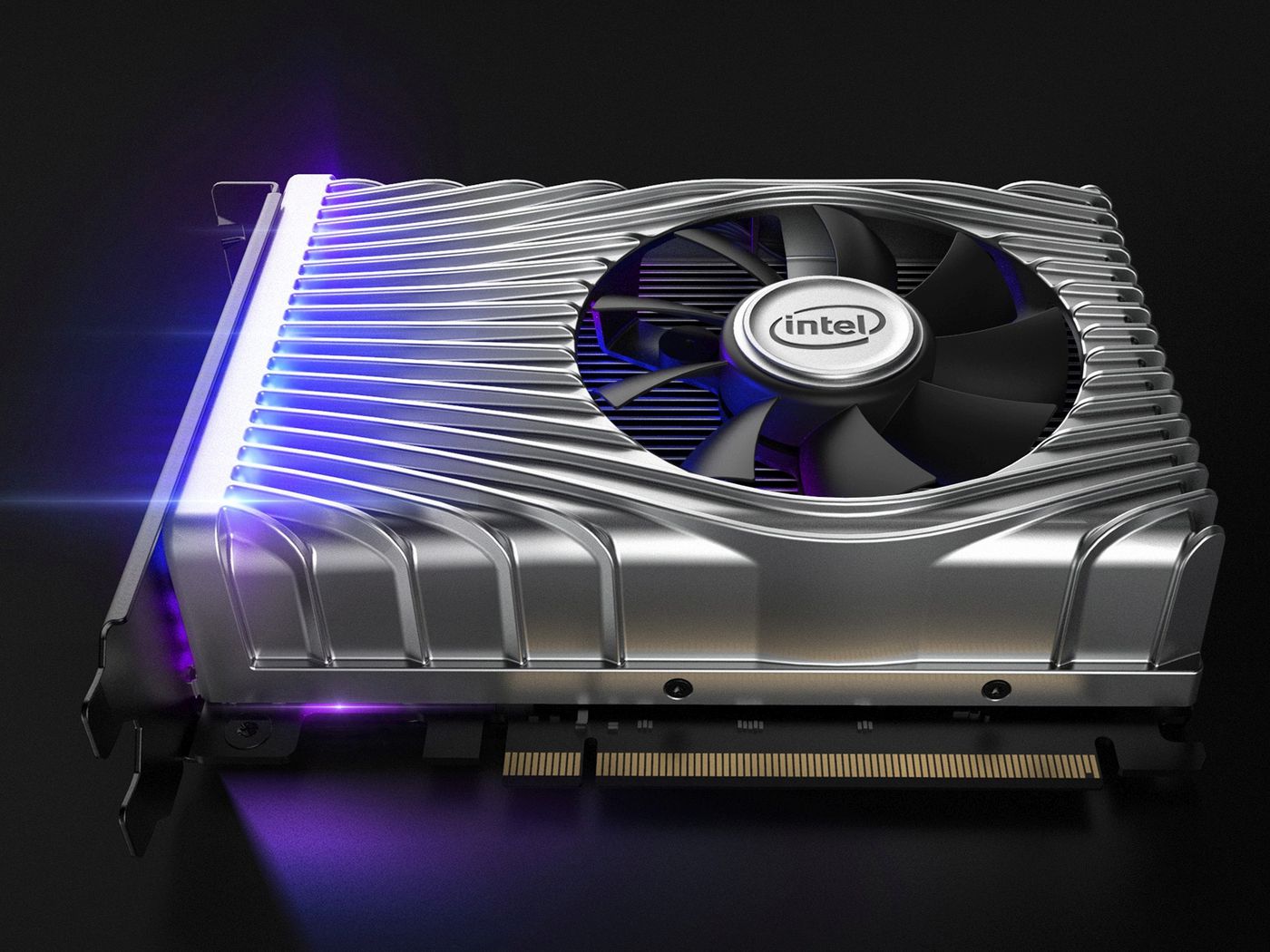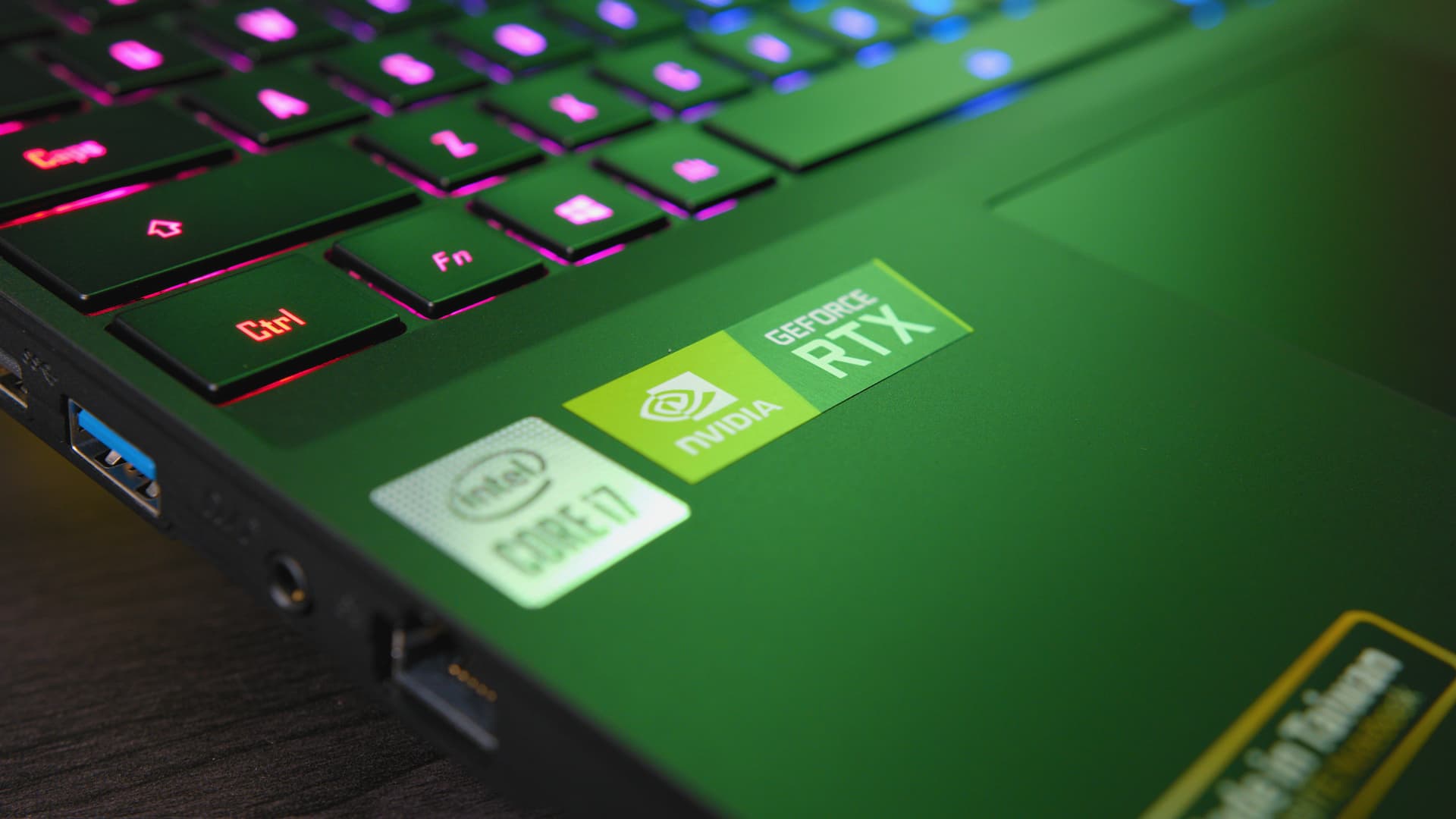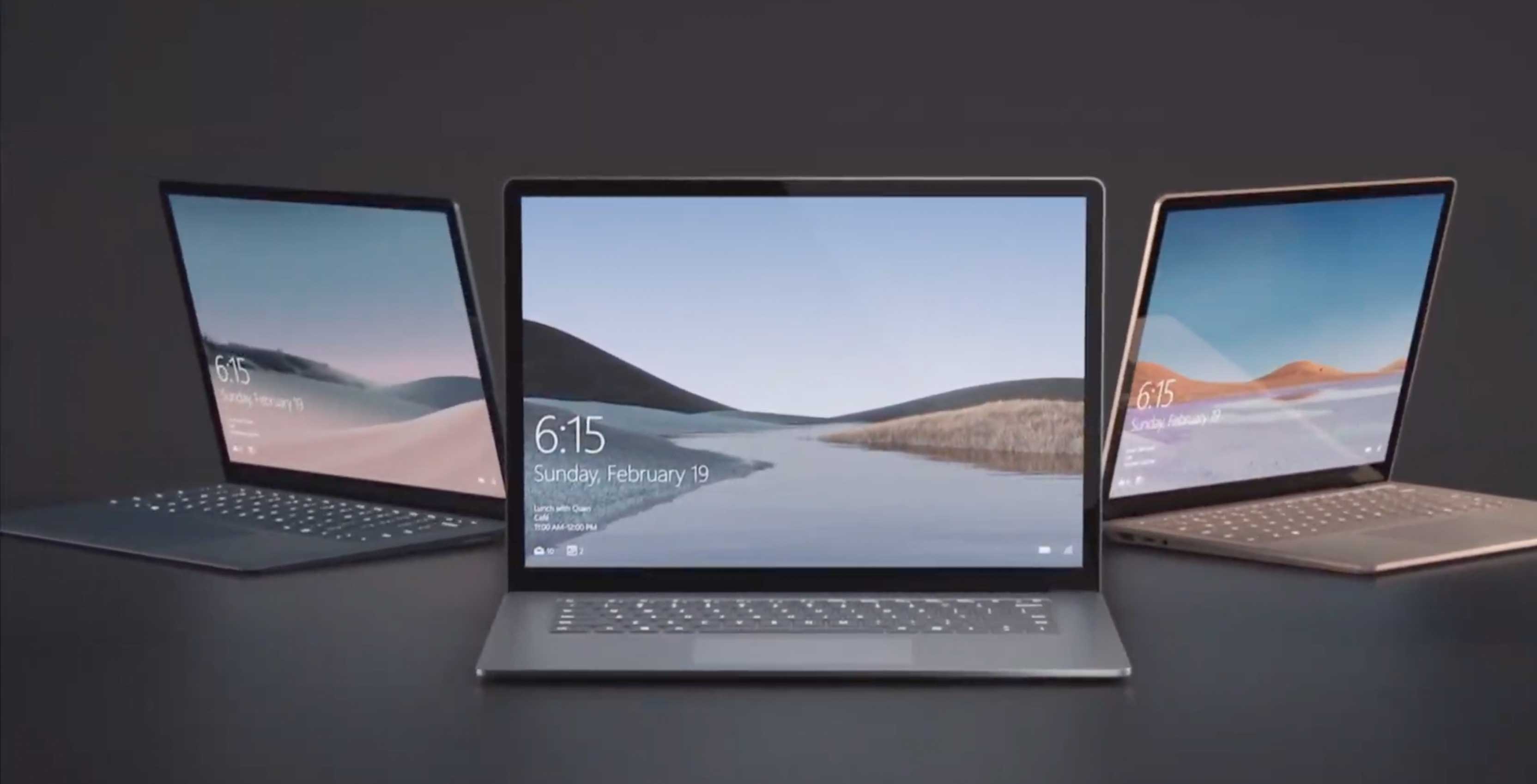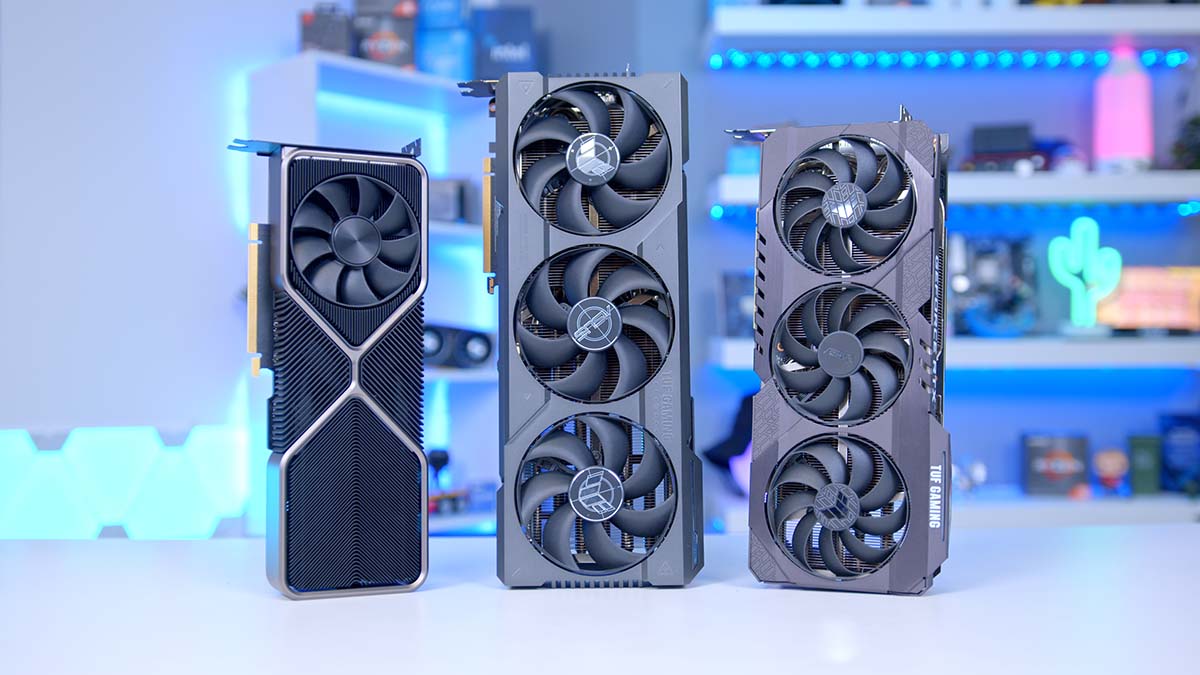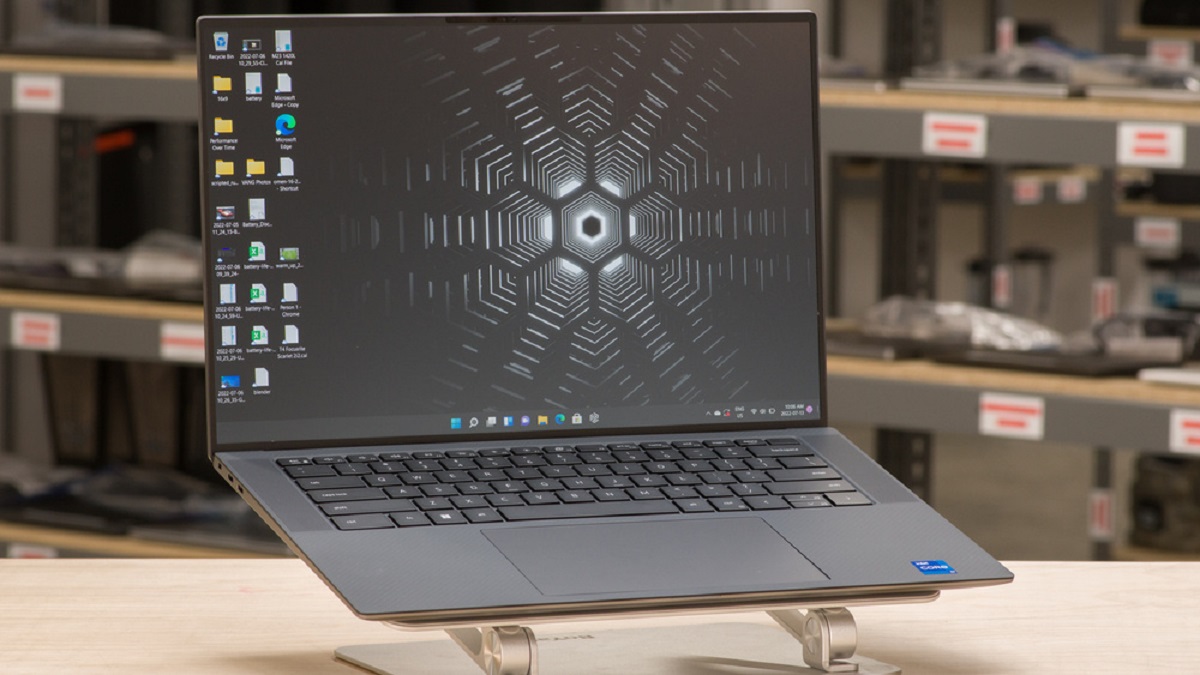Introduction
Welcome to the world of advanced computer graphics! As technology continues to progress at a rapid pace, the demand for high-quality visuals in computer applications, gaming, and multimedia content has skyrocketed. One of the key components responsible for delivering stunning graphics is the discrete graphics card.
A discrete graphics card, also known as a dedicated graphics card, is a separate component in a computer system solely dedicated to handling graphics processing. Unlike integrated graphics, which are integrated into the computer’s CPU, a discrete graphics card offers superior graphics performance by having its own dedicated resources.
In this article, we will explore the world of discrete graphics cards, delve into how they work, and discuss their benefits for various applications. Whether you’re a gamer, a content creator, or simply someone looking to enhance their visual experience, understanding the importance of a discrete graphics card can greatly impact your computing experience.
So, join us on this journey as we unravel the mysteries behind discrete graphics cards and discover how they can take your computing experience to a whole new level!
Definition of a Discrete Graphics Card
A discrete graphics card, also known as a dedicated graphics card, is a separate component in a computer system that is responsible for processing and rendering high-quality visuals. It is specifically designed to handle complex graphics tasks, such as gaming, video editing, and 3D modeling, with efficiency and precision.
Unlike integrated graphics, which are integrated into the computer’s CPU, a discrete graphics card has its own dedicated processor, memory, and cooling system. This allows it to operate independently and provide better performance when it comes to graphics-intensive applications.
By offloading the graphics processing tasks from the CPU to the discrete graphics card, the overall performance and efficiency of the computer system can be greatly improved. This is particularly beneficial for tasks that require real-time rendering, high frame rates, and advanced visual effects.
Discrete graphics cards are equipped with their own dedicated memory, known as VRAM (Video Random Access Memory), which allows them to store and access large amounts of data quickly. This enables the card to handle complex textures, high-resolution images, and large video files without any lag or performance degradation.
In addition to handling graphics processing, many modern discrete graphics cards also support additional features, such as hardware acceleration for video encoding and decoding, multi-monitor support, and advanced shading techniques. These features further enhance the visual experience and provide more flexibility in terms of display options.
Overall, a discrete graphics card is an essential component for users who demand high-performance graphics and want to elevate their computing experience. Whether you’re a gamer, a video editor, or a graphic designer, having a discrete graphics card in your system can make a significant difference in terms of visual quality, speed, and responsiveness.
Comparison with Integrated Graphics
When it comes to graphics processing in a computer system, there are two main options: discrete graphics cards and integrated graphics. Integrated graphics, as the name suggests, are integrated into the computer’s CPU and share system memory for graphics processing tasks.
While integrated graphics have come a long way in recent years and can handle basic graphics tasks adequately, there are several key differences and advantages that discrete graphics cards offer:
Performance: One of the biggest advantages of a discrete graphics card over integrated graphics is the performance boost it provides. A discrete graphics card has its own dedicated GPU (Graphics Processing Unit) and VRAM, allowing it to deliver significantly better performance, especially in graphics-intensive applications like gaming or 3D rendering.
Visual Quality: Discrete graphics cards are designed to handle high-resolution textures, complex shaders, and advanced visual effects. They can render images with greater detail and realism, resulting in a more immersive and visually appealing experience compared to integrated graphics.
Video Memory: Integrated graphics share system memory with the CPU, which means they have limited access to memory resources. On the other hand, discrete graphics cards come with their own dedicated VRAM, which allows for faster data access and more efficient handling of large graphic files and textures.
Upgradeability: Integrated graphics are built into the CPU and cannot be upgraded separately. In contrast, discrete graphics cards can be easily upgraded or replaced, providing more flexibility for users who want to improve their system’s graphics performance in the future or adapt to evolving software requirements.
Power and Cooling: Discrete graphics cards, being separate components, have their own power requirements and cooling solutions. This allows them to dissipate heat effectively, leading to more stable performance and preventing thermal throttling during intense graphics processing tasks.
Multi-Monitor Support: While some integrated graphics solutions do offer support for multiple monitors, discrete graphics cards generally provide better compatibility and performance when it comes to running multiple displays simultaneously. This is particularly important for professionals who require a multi-monitor setup for productivity or immersive gaming experiences.
While integrated graphics can suffice for basic tasks and everyday computer usage, a discrete graphics card is the preferred choice for users who demand higher performance, superior visual quality, and the ability to handle graphics-intensive applications efficiently.
Benefits of a Discrete Graphics Card
A discrete graphics card offers a multitude of benefits that greatly enhance the overall computing experience. Whether you’re a gamer, a content creator, or a professional in a graphics-intensive field, having a discrete graphics card in your computer system can provide the following advantages:
Improved Gaming Performance: One of the primary benefits of a discrete graphics card is its ability to handle the demanding graphics requirements of modern games. With a dedicated GPU and its own VRAM, a discrete graphics card can deliver higher frame rates, smoother gameplay, and stunning visual effects, allowing gamers to fully immerse themselves in their favorite games.
Enhanced Visual Quality: Graphics are a crucial component of any visual media, be it movies, videos, or digital art. A discrete graphics card excels in rendering high-resolution textures, complex shaders, and realistic lighting effects, resulting in sharper, more detailed, and visually stunning visuals. This makes it ideal for professional content creators and designers who require precise and accurate representations of their work.
Faster Rendering and Video Editing: When it comes to video editing, rendering can be a time-consuming process. A discrete graphics card can significantly reduce rendering times by offloading the workload from the CPU to the GPU. This allows for faster video encoding, decoding, and rendering, resulting in more efficient workflows and shorter turnaround times for projects.
Support for Multiple Monitors: Many discrete graphics cards offer support for multiple monitors, allowing users to expand their workspace or create immersive multi-monitor gaming setups. This is particularly beneficial for professionals who require a larger and more flexible display area or gamers looking to enhance their gaming experience with a panoramic view.
Compatibility with VR and AR: Virtual Reality (VR) and Augmented Reality (AR) have become increasingly popular in recent years. A discrete graphics card is essential for providing the performance and processing power required for immersive VR and AR experiences. It ensures smooth and realistic visuals, reducing motion sickness and delivering a truly captivating virtual environment.
Smooth Video Playback: Discrete graphics cards come equipped with hardware acceleration capabilities, allowing for smoother video playback. By offloading the video decoding process to the GPU, the CPU is freed up to handle other tasks, resulting in seamless video playback even at high resolutions and bitrates.
Future-Proofing and Upgradability: Another advantage of a discrete graphics card is its upgradability. Unlike integrated graphics, a discrete graphics card can be easily upgraded or replaced to meet the ever-increasing demands of new software, games, and applications. This future-proofing ensures that your system remains capable of handling the latest graphics-intensive tasks for years to come.
In summary, a discrete graphics card offers improved gaming performance, enhanced visual quality, faster rendering and video editing, support for multiple monitors, compatibility with VR and AR, smooth video playback, and future-proofing through upgradability. Investing in a discrete graphics card can greatly elevate your computing experience, whether you’re a gamer, content creator, or professional in a graphics-intensive field.
How Does a Discrete Graphics Card Work?
A discrete graphics card operates by offloading the graphics processing tasks from the computer’s CPU to its dedicated GPU (Graphics Processing Unit). This allows the GPU to focus solely on rendering high-quality graphics, resulting in improved performance and visual quality.
When a computer receives instructions to process graphics, the CPU transfers the data to the discrete graphics card through the PCIe (Peripheral Component Interconnect Express) slot. The GPU then takes over and performs the complex calculations necessary to render the images or video.
The discrete graphics card has its own dedicated VRAM (Video Random Access Memory), which acts as a high-speed cache for storing data related to graphics processing. The VRAM allows the GPU to quickly access and manipulate large amounts of graphic data, such as textures, shaders, and frame buffers.
The GPU consists of hundreds or even thousands of smaller processing units called CUDA cores or stream processors. These processing units work in parallel to perform calculations and transform raw data into pixels, vertices, and textures that can be displayed on the screen.
Modern discrete graphics cards also feature specialized hardware components, such as texture mapping units, rasterizers, and pixel pipelines. These components contribute to various stages of the graphics pipeline, including geometry processing, shading, and rasterization.
Once the GPU has finished processing the graphics data, it sends the final output back to the computer’s display system through the PCIe slot. The display system retrieves the processed data and converts it into a format that can be displayed on the connected monitor or monitors.
It’s important to note that the collaboration between the discrete graphics card and the CPU is crucial for efficient operation. The CPU handles tasks such as physics calculations, AI processing, and game logic, while the discrete graphics card focuses on graphics rendering. This division of labor ensures smooth and responsive performance, especially in graphics-intensive applications like gaming or 3D rendering.
In summary, a discrete graphics card works by offloading graphics processing tasks from the CPU to its dedicated GPU. Through the use of specialized hardware components and its own VRAM, the GPU performs complex calculations and transforms raw data into high-quality graphics that can be displayed on a monitor or multiple monitors.
Components of a Discrete Graphics Card
A discrete graphics card consists of several key components that work together to deliver high-performance graphics processing. Understanding these components can help users make informed decisions when selecting a graphics card or troubleshooting any issues that may arise. The main components of a discrete graphics card include:
GPU (Graphics Processing Unit): The GPU is the heart of a discrete graphics card. It is responsible for performing the complex calculations required for rendering graphics. The GPU consists of hundreds or thousands of processing units, known as CUDA cores or stream processors, which work in parallel to process the graphics data.
VRAM (Video Random Access Memory): The VRAM is a dedicated memory on the graphics card that stores and accesses data required for graphics processing. It provides high-speed access to textures, shaders, frame buffers, and other graphic elements. The amount and speed of VRAM directly impact a graphics card’s ability to handle high-resolution textures, complex visual effects, and larger datasets.
Power Connectors: Discrete graphics cards require additional power beyond what the motherboard can provide. Power connectors, typically in the form of PCIe power connectors, are used to connect the graphics card to the power supply unit (PSU) of the computer. The number and type of power connectors depend on the power requirements of the graphics card.
Cooling System: Due to the high processing power and energy consumption of discrete graphics cards, they generate significant amounts of heat. To prevent overheating and ensure optimal performance, graphics cards are equipped with cooling systems. These usually include fans, heat sinks, and sometimes even liquid cooling solutions to dissipate heat efficiently.
Display Outputs: Discrete graphics cards have display outputs that allow the user to connect one or more monitors to the card. Common display outputs include HDMI, DisplayPort, and DVI. The number and types of outputs available vary depending on the specific graphics card model.
PCB (Printed Circuit Board): The PCB is the physical platform that connects and holds all the components together on the graphics card. It provides the electrical connections, power distribution, and physical support for the GPU, VRAM, and other components. The PCB layout and design can influence factors such as heat dissipation and overall card performance.
Interface: The interface of a graphics card refers to how it connects to the motherboard and communicates with the CPU. The most common interface for discrete graphics cards is the PCIe (Peripheral Component Interconnect Express), which provides high-speed data transfer between the CPU and the graphics card.
Additional Features: Discrete graphics cards often come with additional features to enhance functionality and performance. These can include features like RGB lighting, overclocking capabilities, specialized software for fine-tuning performance, and integrated video encoding/decoding support for hardware acceleration.
In summary, a discrete graphics card consists of a GPU, VRAM, power connectors, cooling system, display outputs, PCB, interface, and additional features. Each component plays a crucial role in delivering high-performance graphics processing and ensuring a superior visual experience for gamers, content creators, and professionals in graphics-intensive fields.
Selecting the Right Discrete Graphics Card for Your Needs
Choosing the right discrete graphics card requires careful consideration of your specific requirements and budget. With a wide range of options available in the market, understanding the key factors to consider can help you make an informed decision. Here are some important factors to keep in mind when selecting a discrete graphics card:
Performance: Evaluate the performance requirements of the applications or games you intend to use. Consider factors such as the desired resolution, frame rates, and the complexity of visual effects. Higher-end graphics cards with more CUDA cores, higher clock speeds, and greater VRAM capacity generally offer better performance.
Compatibility: Ensure that the graphics card is compatible with your existing hardware setup. Check the available PCIe slots on your motherboard and the power supply connectors required by the graphics card. Additionally, consider the physical dimensions of the card and ensure that it will fit comfortably into your computer case.
Budget: Determine your budget for the graphics card. Prices can vary significantly depending on the performance level and brand. It’s important to strike a balance between your desired performance and the budget you have set aside for the upgrade.
Brand and Warranty: Consider the reputation and warranty offered by the graphics card manufacturer. Established brands often have better customer support and longer warranty periods, giving you peace of mind in case of any issues or faults.
Future-proofing and Upgradability: Look for a graphics card that offers room for future upgrades. Consider factors such as the availability of driver updates, support for new technologies, and the potential to upgrade to a more powerful card in the future.
Power Consumption: Take into account the power requirements of the graphics card. Higher-end cards may require more power and lead to increased electricity consumption. Ensure that your power supply unit (PSU) is capable of supplying sufficient power to the graphics card to prevent any stability or performance issues.
Cooling: Consider the cooling solution provided by the graphics card. Efficient cooling systems can help maintain stable performance and prevent overheating. Look for graphics cards with robust cooling solutions, such as multiple fans or liquid cooling, especially if you plan to engage in intensive gaming or overclocking.
User Reviews and Benchmarks: Read user reviews and refer to benchmark tests to gain insights into real-world performance and user experiences. This can provide additional information to help you make an informed decision and ensure that the graphics card meets your expectations.
Keep in mind that the best graphics card for you ultimately depends on your specific needs, preferences, and budget. By considering factors such as performance, compatibility, budget, future-proofing, power consumption, cooling, brand reputation, and user reviews, you can select a discrete graphics card that fulfills your requirements and enhances your overall computing experience.
Upgrading a Discrete Graphics Card
Upgrading a discrete graphics card can be a significant improvement to your computer’s graphics performance and capabilities. Whether you’re a gamer looking for smoother gameplay or a content creator in need of faster rendering times, upgrading your graphics card can provide a noticeable boost. Here are some important considerations when upgrading a discrete graphics card:
Compatibility: Ensure that the new graphics card is compatible with your current hardware setup. Check the available PCIe slots on your motherboard and the power supply connectors required by the new graphics card. Also, consider the physical dimensions of the card and ensure that it will fit comfortably in your computer case.
Performance: Assess your specific needs and determine the level of performance you require. Consider the types of applications or games you use and their graphics requirements. Look for a graphics card that offers the desired level of performance, such as higher CUDA core counts, clock speeds, and VRAM capacity.
Power Supply: Verify that your power supply unit (PSU) can handle the power demands of the new graphics card. Higher-end graphics cards typically require more power, and using an inadequate power supply can lead to stability issues or even system damage. Ensure that your PSU meets the recommended power requirements for the new graphics card.
Software and Drivers: Research the software compatibility of the new graphics card. Ensure that the manufacturer provides driver updates and support for your operating system. Having the latest drivers can optimize performance, enhance compatibility, and unlock additional features of the graphics card.
Future-proofing: Consider the longevity and potential for future upgrades when selecting a new graphics card. Look for features such as support for new technologies, future driver updates, and the ability to handle upcoming software requirements. This can help ensure that your investment will remain relevant for a longer period.
Cooling: Evaluate the cooling requirements of the new graphics card. Higher-performing cards generate more heat, so make sure your computer case has sufficient airflow and cooling capacity. You may also need to consider adding additional fans or upgrading your cooling system to maintain optimal temperatures and prevent overheating.
Budget: Set a budget for your graphics card upgrade and choose a card that offers the best performance within your price range. Consider the balance between performance and cost, and prioritize your needs based on your intended usage. Compare prices from different manufacturers and retailers to find the best deal.
Installation: When installing the new graphics card, follow the manufacturer’s instructions carefully. Be sure to power off your computer and properly install the card in the appropriate PCIe slot. Update the graphics card drivers after installation to ensure compatibility and optimal performance.
By considering factors such as compatibility, performance, power supply, software, future-proofing, cooling, budget, and proper installation, you can successfully upgrade your discrete graphics card and unlock a world of enhanced graphics performance and capabilities.
Common Misconceptions about Discrete Graphics Cards
Discrete graphics cards are often surrounded by misconceptions and myths. These misconceptions can lead to misunderstandings and misinformation about the capabilities and benefits of these powerful components. Let’s debunk some of the common misconceptions about discrete graphics cards:
Misconception 1: Integrated Graphics are Just as Good: One common misconception is that integrated graphics, which are integrated into the CPU, are just as capable as discrete graphics cards. While integrated graphics have improved over the years, discrete graphics cards still offer significantly better performance and are essential for demanding tasks like gaming, video editing, and 3D modeling.
Misconception 2: Discrete Graphics Cards are Only for Gamers: Discrete graphics cards are often associated solely with gaming. While they do greatly enhance gaming performance, they are also valuable for professionals in fields like graphic design, animation, video production, and scientific visualization. Discrete graphics cards enable faster rendering, smoother video editing, and improved visual quality in these industries.
Misconception 3: More VRAM is Always Better: People often assume that a graphics card with more VRAM automatically translates to better performance. While VRAM is important for handling high-resolution textures and large datasets, having excessive VRAM does not necessarily result in better performance. The amount of VRAM needed depends on the specific applications and games being used. It’s important to find a balance between VRAM capacity and other performance factors.
Misconception 4: Newer Graphics Cards are Always Better: Simply having the latest graphics card doesn’t guarantee the best performance or value for money. Newer cards may offer additional features or better efficiency, but older generation cards can still be powerful and may provide better value depending on your needs and budget. It’s essential to consider performance benchmarks, reviews, and price-to-performance ratios when selecting a graphics card.
Misconception 5: Graphics Cards Only Affect Gaming: Graphics cards do indeed play a critical role in gaming, but their importance extends beyond gaming alone. Any application that relies on visual rendering and graphics processing can benefit from a discrete graphics card. This includes video editing, content creation, CAD/CAM software, 3D modeling, and scientific simulations, among others.
Misconception 6: Cooling isn’t Important for Graphics Cards: Some people underestimate the significance of cooling for graphics cards. High-performance graphics cards generate a considerable amount of heat, which, if not properly dissipated, can lead to performance throttling, stability issues, and reduced lifespan. Proper cooling through fans, heat sinks, or liquid cooling solutions is vital to maintain optimal performance and prevent heat-related problems.
Misconception 7: Overclocking is Always Necessary: Overclocking, which involves running the graphics card at higher frequencies than the manufacturer’s specifications, is not always necessary or recommended. While overclocking can provide a performance boost, it also increases power consumption, heat generation, and potential stability issues. Users should weigh the benefits and risks before attempting to overclock their graphics cards.
Misconception 8: Expensive Graphics Cards Guarantee Better Gaming Experience: While more expensive graphics cards often offer better performance, the overall gaming experience is influenced by several factors like CPU, RAM, storage, and monitor resolution. A balanced system is important for optimal gaming performance, and investing in other components alongside a graphics card can be crucial for a smooth and immersive gaming experience.
By dispelling these common misconceptions and gaining a better understanding of discrete graphics cards, users can make more informed decisions when it comes to selecting, using, and maximizing the potential of these powerful components.
Conclusion
Discrete graphics cards are an integral component for anyone looking to enhance their computing experience, whether it be for gaming, content creation, or professional applications. Their ability to handle complex graphics processing tasks, deliver stunning visuals, and improve performance makes them an essential addition to any computer system.
Throughout this article, we have explored the definition of a discrete graphics card and compared it to integrated graphics, highlighting the superior performance and visual quality offered by discrete graphics cards. We have discussed the benefits they provide, including improved gaming performance, enhanced visual quality, faster rendering times, multi-monitor support, compatibility with VR and AR, smooth video playback, and future-proofing through upgradability.
We have also delved into how discrete graphics cards work, examining components such as the GPU, VRAM, power connectors, cooling systems, display outputs, PCB, interface, and additional features. Understanding these components can help users make informed decisions when selecting a graphics card that best suits their needs and requirements.
Furthermore, we have explored the considerations involved in upgrading a discrete graphics card, debunked common misconceptions, and provided guidance on how to select the right graphics card based on factors such as performance, compatibility, budget, future-proofing, power consumption, cooling, brand reputation, and user reviews.
In conclusion, a discrete graphics card is more than just a component in a computer system; it is a gateway to stunning visuals, improved performance, and immersive experiences in gaming, content creation, and professional applications. By understanding the capabilities, advantages, and considerations related to discrete graphics cards, users can unlock the full potential of their computer systems and elevate their computing experiences to new heights.







